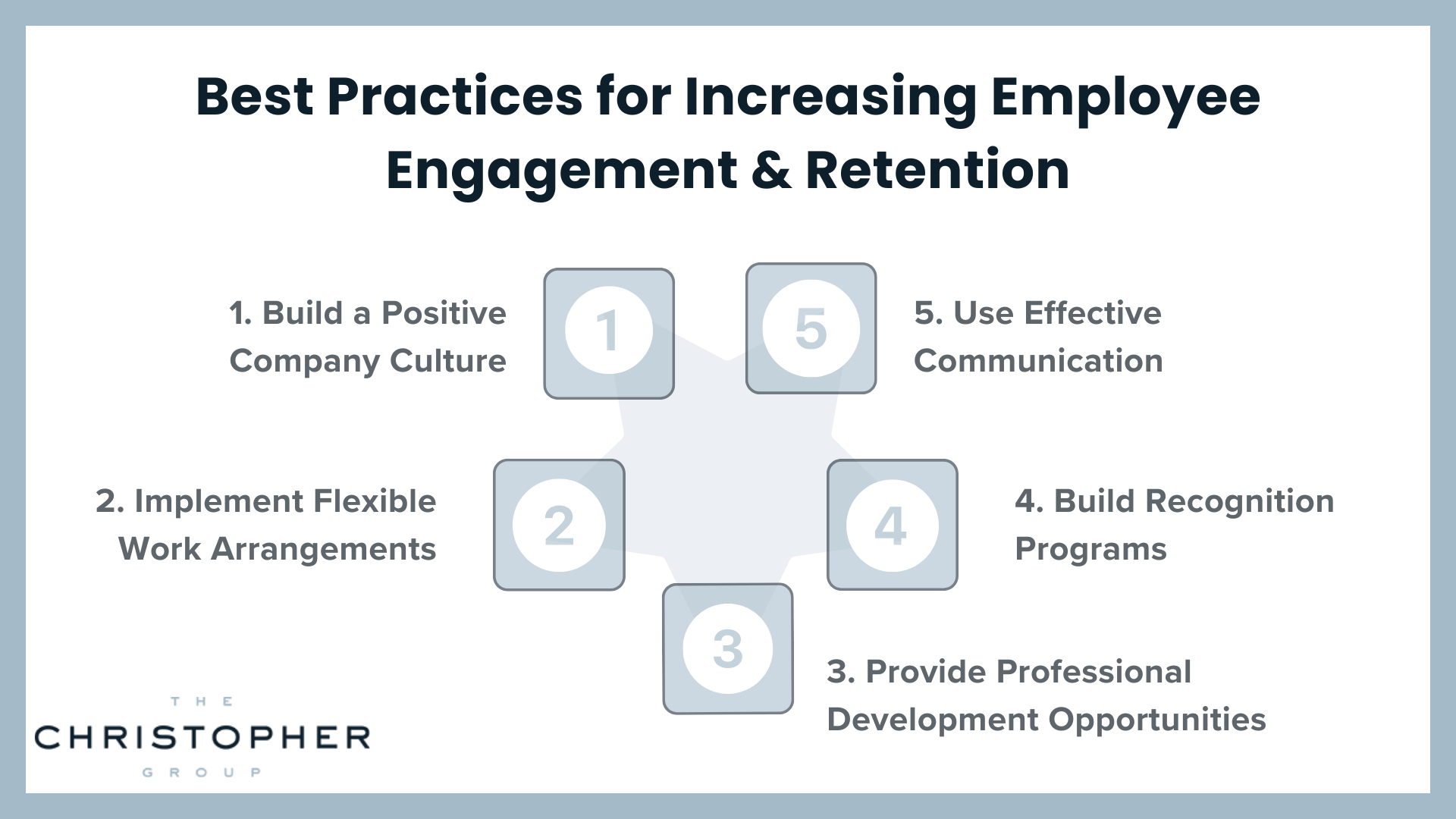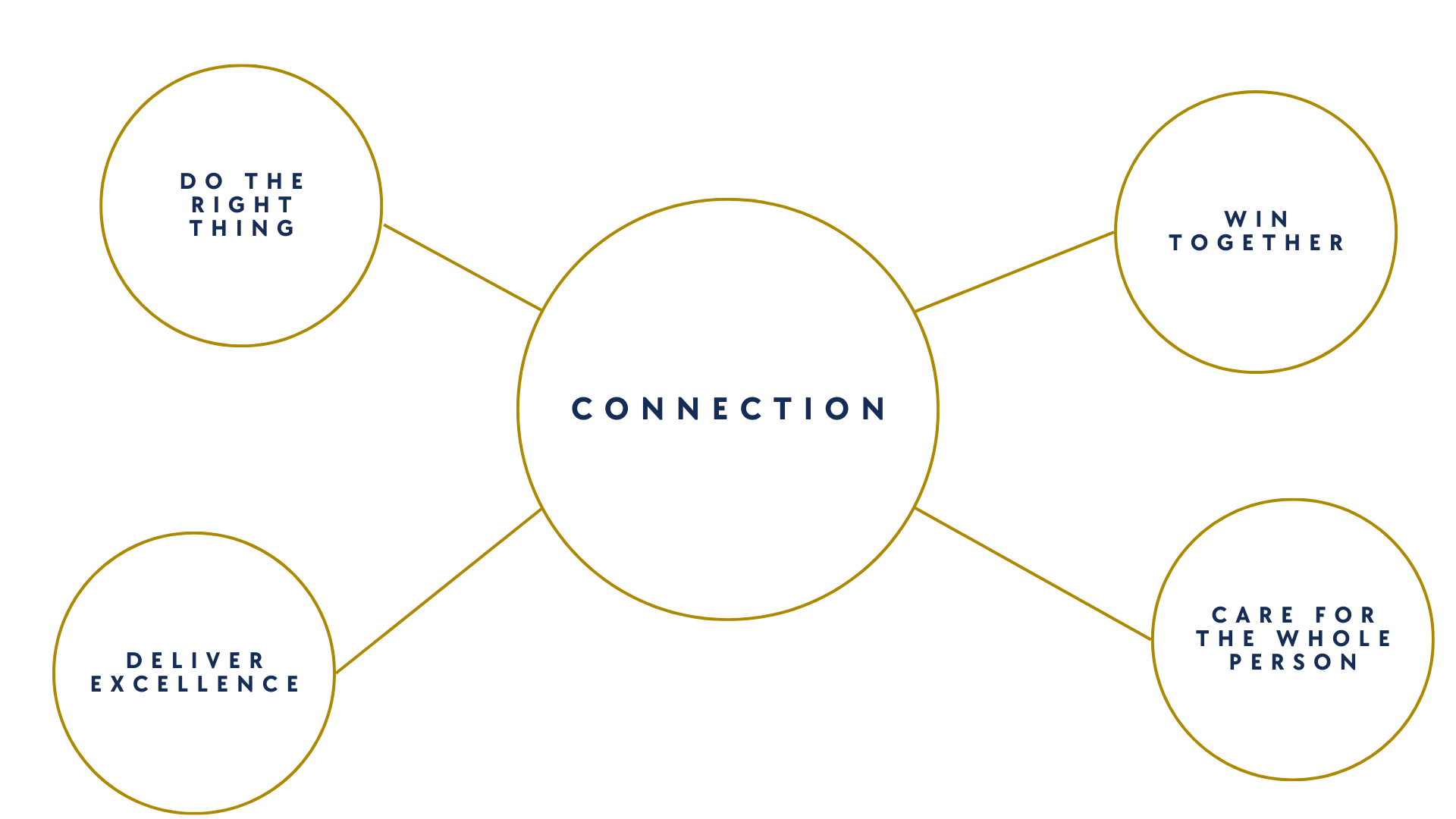Employee engagement and retention are vital metrics for reducing turnover rates, fostering a positive company culture, and maintaining a competitive advantage in today’s workplace.
Disengaged employees and high turnover rates present growing challenges for business leaders, leading to increased costs, decreased morale, and lower overall productivity. Addressing these challenges by improving employee engagement and retention levels ensures long-term success, as a highly engaged workforce is more committed, motivated, and likely to contribute positively to business outcomes.
Defining Core Concepts: Engagement and Retention
Employee Engagement
Employee engagement refers to how connected employees feel to their organization. Engaged employees are enthusiastic about their roles, take pride in their work, and are motivated to help the organization achieve its goals. They are more likely to go above and beyond their basic job responsibilities, contributing to a positive work environment and improved team performance.
Employee Retention
Employee retention is the organization’s ability to keep talented employees and maintain low turnover rates. High retention rates indicate a satisfied and stable workforce, which helps reduce costs associated with recruitment and training while preserving institutional knowledge.
Higher engagement levels directly contribute to retention rates. Engaged employees are generally happier, more satisfied with their jobs, and less likely to leave. According to a recent Harvard Business Review article, companies with high engagement levels tend to see better customer experiences, further reinforcing the value of an engaged workforce (Harvard Business Review).
 Best Practices for Increasing Employee Engagement and Retention
Best Practices for Increasing Employee Engagement and Retention
1. Build a Positive Company Culture
Building a positive company culture starts with clearly defining and emphasizing core values. These values should guide daily operations, decisions, and behaviors across all levels of the organization. When employees understand and align with these values, they feel a stronger connection to the company’s mission.
Fostering a healthy work environment with open communication is equally important. Encouraging transparency, providing a platform for employees to voice their opinions, and maintaining strong relationships between team members help create a collaborative and supportive workplace.
2. Implement Flexible Work Arrangements
Work-life balance is a critical component of employee satisfaction. Flexible work arrangements, such as remote work options, flexible hours, and compressed workweeks, allow employees to better balance their professional and personal lives. Providing competitive compensation and benefits further strengthens employee commitment, as it demonstrates that the organization values its workforce.
Flexible work arrangements not only improve work-life balance but also reduce stress and prevent burnout, leading to an engaged workforce and lower turnover rates.
3. Provide Professional Development Opportunities
Offering continuous learning and professional development opportunities is essential for keeping employees engaged. Training programs, mentorship, and career advancement paths allow employees to grow their skills and achieve personal and professional goals.
When employees see a clear path for career advancement, they are more likely to remain with the organization. Investing in professional development also helps build a highly skilled and adaptable workforce, giving companies a competitive advantage in the industry.
4. Build Recognition Programs
Recognition is a powerful tool for improving employee engagement. Creating meaningful recognition programs that reward employees for their contributions helps boost morale, increase job satisfaction, and reinforce positive behaviors.
Recognition can take many forms, such as
- Bonuses
- Public acknowledgments
- Peer-to-peer recognition
The key is to make sure that recognition is timely, genuine, and aligned with the company’s core values.
5. Use Effective Communication
Effective communication is fundamental to building trust and fostering strong relationships within an organization. Regular feedback, whether through formal performance reviews or informal check-ins, ensures that employees know how they are performing and in what areas they can improve.
Clear communication channels help prevent misunderstandings and promote a culture of openness. When employees feel heard and understood, they are more likely to be engaged and committed to their roles.
Turning Strategies into Results: Real-World Applications
Implementing these best practices requires ongoing effort and commitment. Organizations can use various tools and strategies to assess engagement levels and improve retention.
- Team-Building Activities: Regular team-building events foster camaraderie and collaboration.
- Mentorship Programs: Pairing experienced employees with newer team members helps build strong relationships and provides guidance.
- Regular Surveys: Employee satisfaction surveys provide valuable insights into engagement levels and areas for improvement.
Offering competitive compensation packages, including retirement plans, health insurance, and wellness programs, is another critical retention strategy. These benefits address employees’ professional and personal needs, contributing to job satisfaction and long-term loyalty.
Maintaining momentum involves continuously adapting engagement efforts to meet evolving employee needs. Business leaders should regularly evaluate the effectiveness of their retention strategies and make necessary adjustments to stay competitive.
Elevate Your Workplace with Engagement and Retention
Prioritizing employee engagement and retention delivers a range of benefits:
- Happier employees who are more productive and motivated
- Lower employee turnover, reducing recruitment and training costs
- Improved customer satisfaction, as engaged employees provide better service
- A more resilient company culture that fosters innovation and adaptability
These factors create a solid foundation for long-term success. The Christopher Group specializes in connecting companies with top HR professionals who excel at driving engagement and retention. Our experienced recruiters understand the nuances of employee engagement and retention strategies, ensuring that organizations find the right leaders to build a thriving workforce.
 Targeted HR Solutions with The Christopher Group
Targeted HR Solutions with The Christopher Group
At The Christopher Group, we offer tailored HR solutions designed to meet your organization’s unique needs. Our expertise in executive search allows us to identify HR leaders who can:
- Enhance Employee Engagement: By fostering a positive work environment and implementing best practices.
- Improve Retention Rates: Through strategic initiatives that address employee satisfaction and professional growth.
- Promote a Healthy Work-Life Balance: By advocating for flexible work arrangements and comprehensive benefits packages.
- Strengthen Company Culture: By aligning core values with daily operations and encouraging open communication.
Our approach ensures that organizations build a workforce that thrives in today’s competitive environment.
Schedule a Free Consultation
Investing in employee engagement and retention is key to achieving long-term success. Let The Christopher Group help you attract, retain, and engage top talent. Request a free consultation today and take the first step toward creating a more engaged, high-performing workforce.
Resources:
https://hbr.org/2023/04/engaged-employees-create-better-customer-experiences
https://stratus.hr/resources/effects-of-high-employee-turnover

